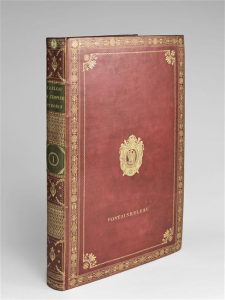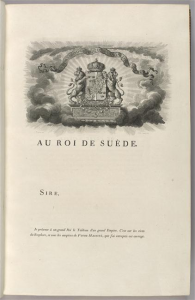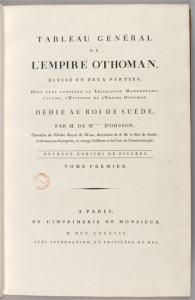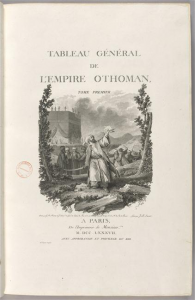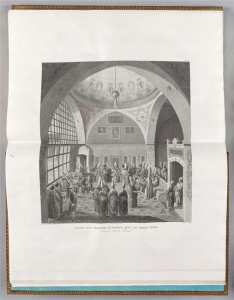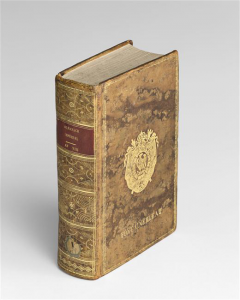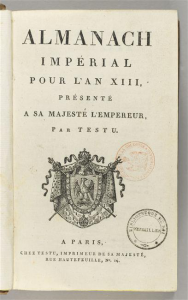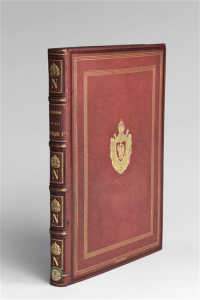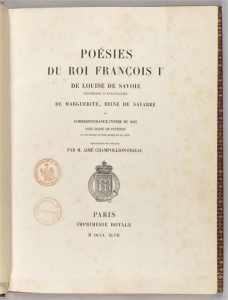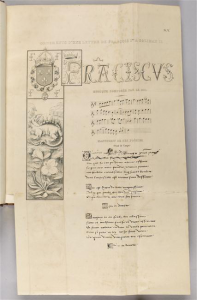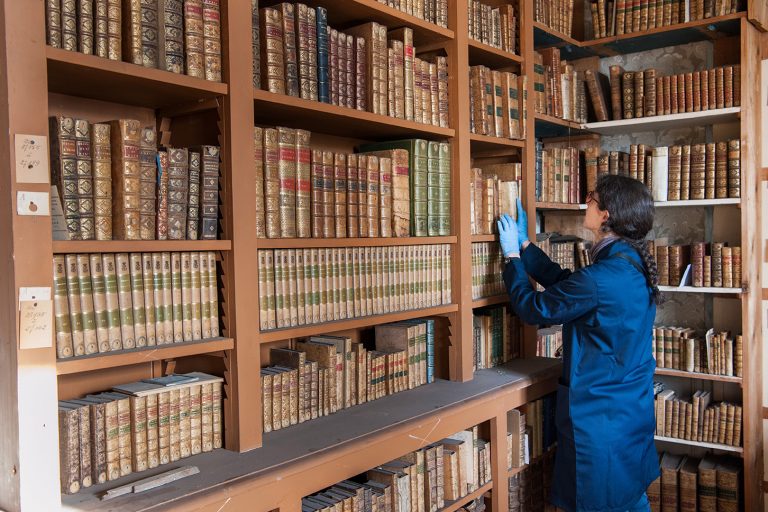
Partly visible to the public during the tour, in the Diana Gallery and the Petits Appartements, the works are only accessible to a restricted readership of researchers.
The collections, estimated at about 35,000 volumes, have BnF repository status (order of 16 January 1888) and are included in the BnF general catalogue:
Copies kept at the Château de Fontainebleau are marked with the words ‘special communication upon substantiated request’.
Although the works of the prestigious Royal Library of the Renaissance left Fontainebleau as early as the 16th century, the castle still has important collections of printed matter dating from the 16th to the 19th century. Built at the instigation of Napoleon I and in use throughout the 19th century, the castle’s libraries are divided into two main groups: the palace library and the emperor’s private library.
The collections originated in the libraries of the Council of State and the Tribunate, the initial core of which consisted of works from revolutionary confiscations. Enriched during the French Empire and then throughout the 19th century through regular acquisitions, the interest of these collections lies as much in their historical depth as in the bibliophilic particularities of the many copies and the diversity of the publications that have been collected here.
Selected works:
Mouradgea d’Ohsson, Ignatius, Overview of the Ottoman Empire, divided into two parts, one of which includes Mohammedan law;the other one is the history of the Ottoman Empire… T. I and II, Paris, from his printing works, 1787-1790;T. III, Paris, Firmin Didot, 1820, 3 vol. gr. in-fol. (520 x 350 mm) of [4] ff., x pp., [1] f., 324 pp, [2] ff., 42 pl. ;[2] ff., viii pp, 357 pp, 98 pl. ;viii pp, [3] ff., 474 pp, 95 pl.
Long-grained red leather, with Napoleon I’s coat of arms for the first two volumes, Louis XVIII’s coat of arms for the third, with the words ‘Fontainebleau’ on the covers, roulettes and fleurons framing the covers, double fillet framing a richly decorated long spine, title and volume number pieces in long-grained green leather, roulettes on the board edges and the square, gilt edges, inside cover and blue ‘tabis’ endpapers for the first two volumes, blue paper for the third.
Inv. FB-37317;FB-37318;
FB-37319
A Swedish diplomat and writer of Armenian origin, Ignatius Mouradgea d’Ohsson (1740-1824) was the secretary and first interpreter to the Swedish ambassador in Constantinople.
With the knowledge he had acquired in the field, he devoted himself to writing his ‘Overview of the Ottoman Empire’, a considerable documentary work which describes with great precision the politics, legislation and religion in Ottoman land.
The 235 engravings made by Jean-Baptiste Hilaire and numerous collaborators, inserted in the three volumes of the work, illustrate in a lively and detailed manner the various subjects dealt with in this ‘overview’.
© RMN-Grand Palais (Château de Fontainebleau)/Adrien Didierjean
Plate number: 17-616105
© RMN-Grand Palais (Château de Fontainebleau)/Adrien Didierjean
Plate number: 17-616109
© RMN-Grand Palais (Château de Fontainebleau)/Adrien Didierjean
Plate number: 17-616108
© RMN-Grand Palais (Château de Fontainebleau)/Adrien Didierjean
Plate number: 17-616107
© RMN-Grand Palais (Château de Fontainebleau)/Adrien Didierjean
Plate number: 17-616116
Volume 3, plate 232, inserted p. 454, double-page illustration, ‘European Minister’s Dinner with the Great Vézir in the Divan Room’.
Imperial Almanac for the year XIII… Paris, Testu, 1804, in-8° (205 x 135 mm) of [8] ff., 832 pp.
Brown calfskin bearing Napoleon I’s coat of arms with the words ‘Fontainebleau’ on the top cover, framed roulette on the covers, double fillet framing a long spine decorated with a small iron, red leather title piece, roulette on the board edges, white edges speckled with red, inside covers and endpapers decorated with marbled pebbled paper.
Inv. FB-30221
Following the tradition of the royal almanacs of the Ancien Régime, this imperial almanac contains a great deal of information on a variety of subjects: organisation of the State, names and positions of political leaders, list of holders of administrative posts, military, commercial and religious organisation, astronomical calendar…
© RMN-Grand Palais (Château de Fontainebleau)/Adrien Didierjean
Plate number: 17-616099
© RMN-Grand Palais (Château de Fontainebleau)/Adrien Didierjean
Plate number: 17-616101
Champollion-Figeac, Aimé (ed.), Francis I, Poetry by King Francis I, Louise de Savoy, Duchess of Angoulême, Marguerite, Queen of Navarre, and the King’s intimate correspondence with Diane de Poitiers and several other ladies of the court…, Paris, Imprimerie royale, 1847, in-4° (300 x 235 mm) de [2] ff., XI pp., 235 pp, 5 pl.
Inv. FB-38219
Red shagreen with Napoleon III’s coat of arms with the words ‘Fontainebleau’ on the top cover, eight gilded fillets and a cold rolled fillet framing the covers, back with four raised bands decorated with palettes, cold rolled and gilded fillets framing in between the raised bands with the emperor’s numeral topped by an imperial crown, roulette on the board edges, gilded edges, lace framing the decorated inside covers and endpapers of combed marbled paper.
Historian, librarian and chartist, Aimé Champollion-Figeac (1813-1894) was the son of Jacques-Joseph Champollion-Figeac, a librarian at the palace of Fontainebleau during the Second French Empire. Following in his father’s footsteps, he was also a librarian at the Royal Library, then the Imperial Library, before becoming Director of the Departmental Archives of France.
He left an important scholarly body of work, both as an author and a scientific publisher.
By publishing these poetic works of Francis I in 1847, he highlighted the creative facet of the sovereign, protector of the arts and great builder of the Renaissance.
The presence of this work in the collections of the Fontainebleau library can be interpreted as a symbol of historical continuity and spiritual heritage.
© RMN-Grand Palais (Château de Fontainebleau)/Adrien Didierjean
Plate number: 17-616120
© RMN-Grand Palais (Château de Fontainebleau)/Adrien Didierjean
Plate number: 17-616123
© RMN-Grand Palais (Château de Fontainebleau)/Adrien Didierjean
Plate number: 17-616122
